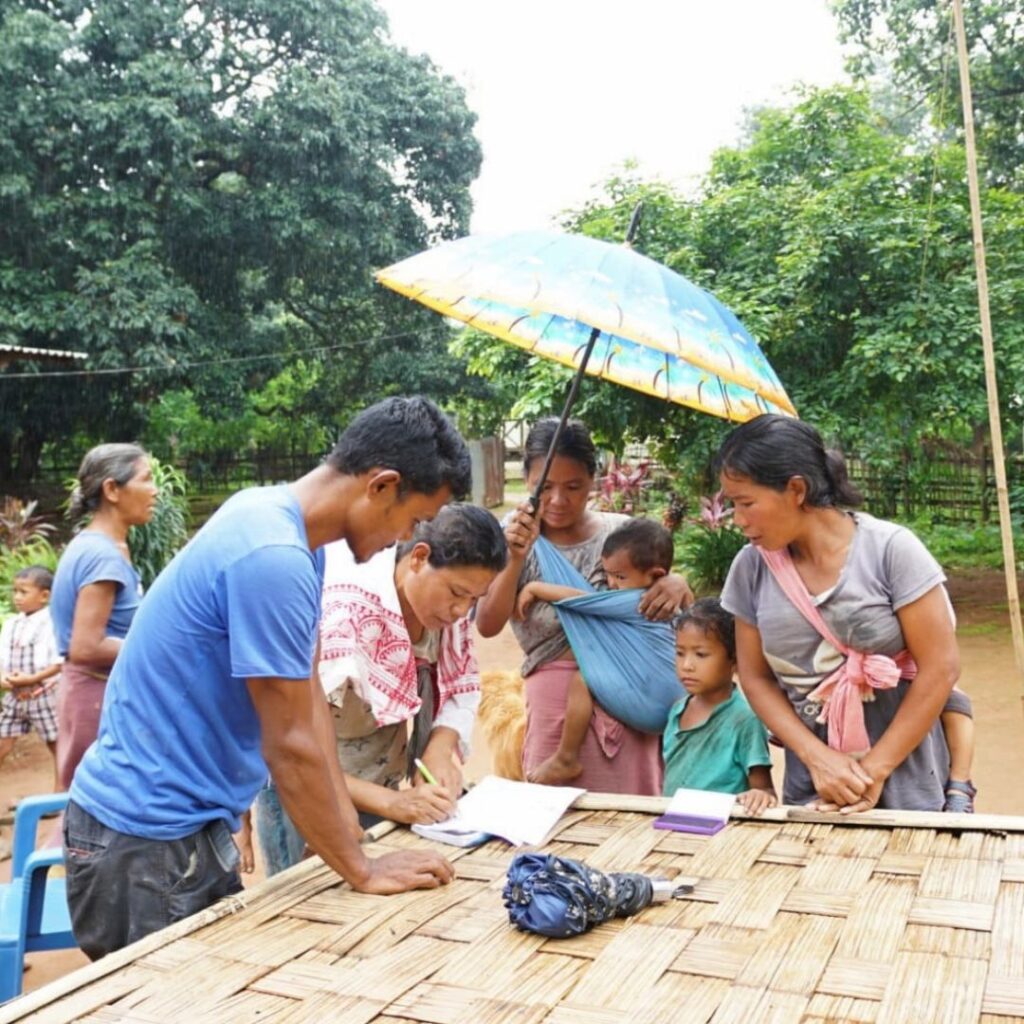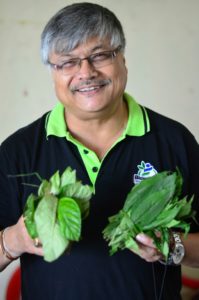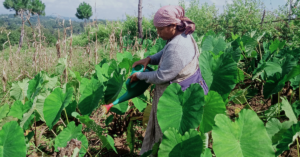A training on Participatory Research was facilitated by team members of NESFAS on June 23, 2022, at Rongchadenggre, partner village in South West Garo Hills. Other villages of the same cluster, namely, Kokatolgre, Baladinggre and Masudigre also actively participated in the training which is part of the ongoing NESFAS’ project “Empowering Indigenous Communities through Agroecology Learning Circles (ALCs) for resilient, integrated and innovative natural resource management”, which is supported by MBMA and funded by the World Bank. Inspite of the fact that the four villages are new communities that NESFAS has recently taken under its wing, with the ALC experiments being their pilot project, the training saw an impressive turnout, and it can be said that this cluster consists one of the most enthusiastic participants in the Garo Hills region.

These communities who live adjacent to one another under one headman, had been practicing the age old method of eradicating fruit borer and spider mite infestation in brinjal using wood ash and biomass for many years, but somehow the frequency of this indigenous method being observed became less and less over the years.
With the intervention of NESFAS, the four communities dedicated to perform this experiment as part of their ALC project, with improved steps. The farmers of these communities are now scattering wood ash in and around the plant soon after the flowering stage, as opposed to the earlier method of waiting to spot the infestation. The use of wood ash will significantly reduce the spread of the pests, thus preventing it from causing further destruction. The idea behind using biomass is to enhance the growth of the plant, to make it healthy so as to reach the flowering stage faster.
The training started off with an interactive recapitulation of the aim of this experiment, which was written and displayed. Each of the communities penned down the details of their experiments, also stating the progress made till date. The findings showed that most of these communities had already started the first phases of their experiments, with most of their brinjal plantations currently at the fruiting stage. Some of the ALC members have also reported to have started harvesting the brinjals.
The experiment plots for this cluster are both in shifting fields and kitchen gardens. The seeds were sown in the months of March and transplanted later in the same month. Given all favorable conditions, the brinjal plants take approximately 62 days from the day when seeds are sown to the day the brinjals are ready for the first harvests.
The spider mites and the fruit borers attack the brinjal plants, feeding on the stem, leaves and fruits of the plant, thus making it unhealthy. In these communities where brinjals are found in every household, these pests pose much nuisance and are a challenge to every farmer.

Rela Marak is an active member of Rongchadenggre ALC group who has planted brinjal plants in her kitchen garden and have also had some good harvest. “The brinjal plants are fast growers. If the seeds are healthy, they grow real quick. We see them flower one day, and then we don’t go check on them for a day, and on the next, we’ll see them fruiting, and then a week later, they are all ready for harvest,” she said.
Like other members of her ALC group, Rela Marak has performed the experiment, once for each of putting the biomass and scattering of wood ash.
“The pests aren’t visible yet. They will be around October-November, that’s when the pests are at peak. For now we will keep scattering the wood ash at regular intervals. As the plants grow bigger, they will also yield more fruits” she added.
To prove the efficacy of this experiment, the ALC members of these communities have also marked and segregated their plots into “Treated” and “Untreated” categories, thereby making it feasible for easy identification.
Meanwhile, the ALC farmers have also been trained to analyse and take down detailed notes of their experiments with indicators so as to show evidence of their findings and to prove that their indigenous knowledge of pest management is working.
While the experiment progresses at its pace with great hope to attain success, the ALC members individually are also simultaneously using knowledge of the shared wisdom of other methods of indigenous pest management that they have acquired in this short tenure of ALC membership, through different technical trainings and exchange visits that they have attended in other communities so far. Though these are baby steps in the march toward food security and sovereignty, they are at a sure and steady pace, and in the right direction.



